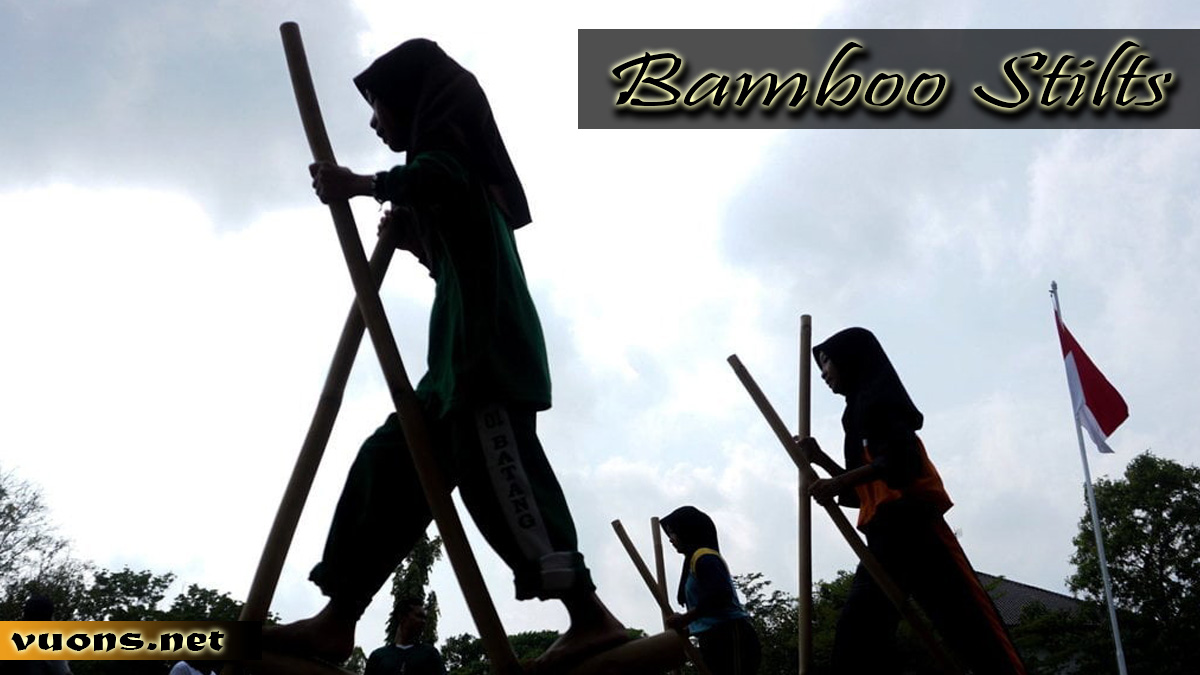Stilts: History, Construction, and How to Play
Stilts: An Enchanting Traditional Game
Indonesia is a country rich in culture and traditions, including traditional games. One game that is still sustainable today is the game of stilts. Stilts are a unique and fascinating traditional game, involving extraordinary skill and balance from the players. In this article, we will explore the origins, rules and importance of stilts in Indonesia’s cultural heritage.
Origins of Stilts
Stilts have a rich history in Indonesia, and are believed to have been played since ancient times. Although there are no definite written records about their origins, stilts have been part of Indonesian people’s lives for centuries. Some historians believe that stilts were originally played as a form of entertainment in rural areas, using bamboo and wood as the main tools.
Apart from that, there are also those who believe that stilts were originally used as a means of transportation in inland areas. The youth will use stilts to cross rivers or swampy areas that are difficult to reach on foot. However, as time went by, stilts developed into a more entertainment and competitive game.
Stilt Construction and Materials
Stilts are made from two long bamboo sticks attached to two wider pieces of wood or planks at the top. The length of these stilts is adjusted to the height of the player who will play them. At the bottom, the bamboo is given a handle that the player can step on, while at the top, there is a place for the feet to stand.
Apart from that, stilts are also usually given additional decoration or decoration to make them more visually attractive. These decorations often reflect rich local culture, such as traditional motifs or beautiful hand paintings.
Rules for Playing Stilts
The rules for playing stilts are quite simple but require good skill and balance. Players stand on stilts with one foot on each bamboo, while they use the handle on the bottom to maintain balance. The main goal of the game is to step forward on stilts and reach the finish line without falling.
Players must be careful and try to maintain their balance while moving forward. Even an instant imbalance can cause them to fall off the stilts and lose the game. Therefore, stilts is a game that requires skill, focus and good balance.
The Importance of Stilts in Indonesian Cultural Heritage
Stilts are not just an ordinary traditional game, but are also an important part of Indonesia’s cultural heritage. This game is not only fun to play, but also has deep cultural and social values. First of all, stilts promote physical activity and good health. Playing on stilts involves active body movements and can help improve children’s motor skills and balance.
Additionally, stilts also play an important role in promoting cooperation and healthy competition among players. Because stilts are often played as a competition, players must learn to work together as a team and compete with good sportsmanship. This helps teach values such as cooperation, honesty, and sportsmanship to the younger generation.
Apart from a social and cultural perspective, stilts also have economic value. In some areas, the manufacture and sale of stilts is a source of income for local communities. This can provide a good economic boost to communities, especially for those living in rural areas.

Facing Challenges in Preserving Stilts
Even though stilts have many benefits and positive values, this game faces challenges in its conservation efforts. One of the main challenges is changes in modern lifestyles which tend to shift people’s interest from traditional games to modern games which are more instantaneous. Many children and teens are more interested in video games and gadgets than playing outside on stilts.
In addition, social and economic changes can also affect stilt conservation. In urban areas, limited land and a lack of open space make it difficult for children to play on stilts safely. In addition, competition from the modern entertainment industry can also make stilts marginalized and forgotten.
Efforts to Preserve and Promote Stilts
Despite the challenges, many efforts have been made to preserve and promote stilts in Indonesia. One of the steps taken is to include stilts in the school curriculum as part of arts and culture education. This way, children can learn about the traditional values and history behind this game.
Additionally, governments and non-governmental organizations have organized stilt events and festivals in various regions to increase public awareness about this game. These events often include stilt competitions, cultural arts performances, and stilt-making workshops. All this aims to arouse people’s interest in stilts and encourage them to get involved in their conservation.
Conclusion
Stilts are one of the most interesting and enchanting traditional games in Indonesia. With a rich history and deep cultural values, stilts are not only fun to play on but also have a positive impact on society. It is important for all of us to respect and preserve this game so that it can be enjoyed by future generations. Through the joint efforts of governments, communities and non-governmental organizations, we can ensure that stilts live and thrive as part of our precious cultural heritage.



